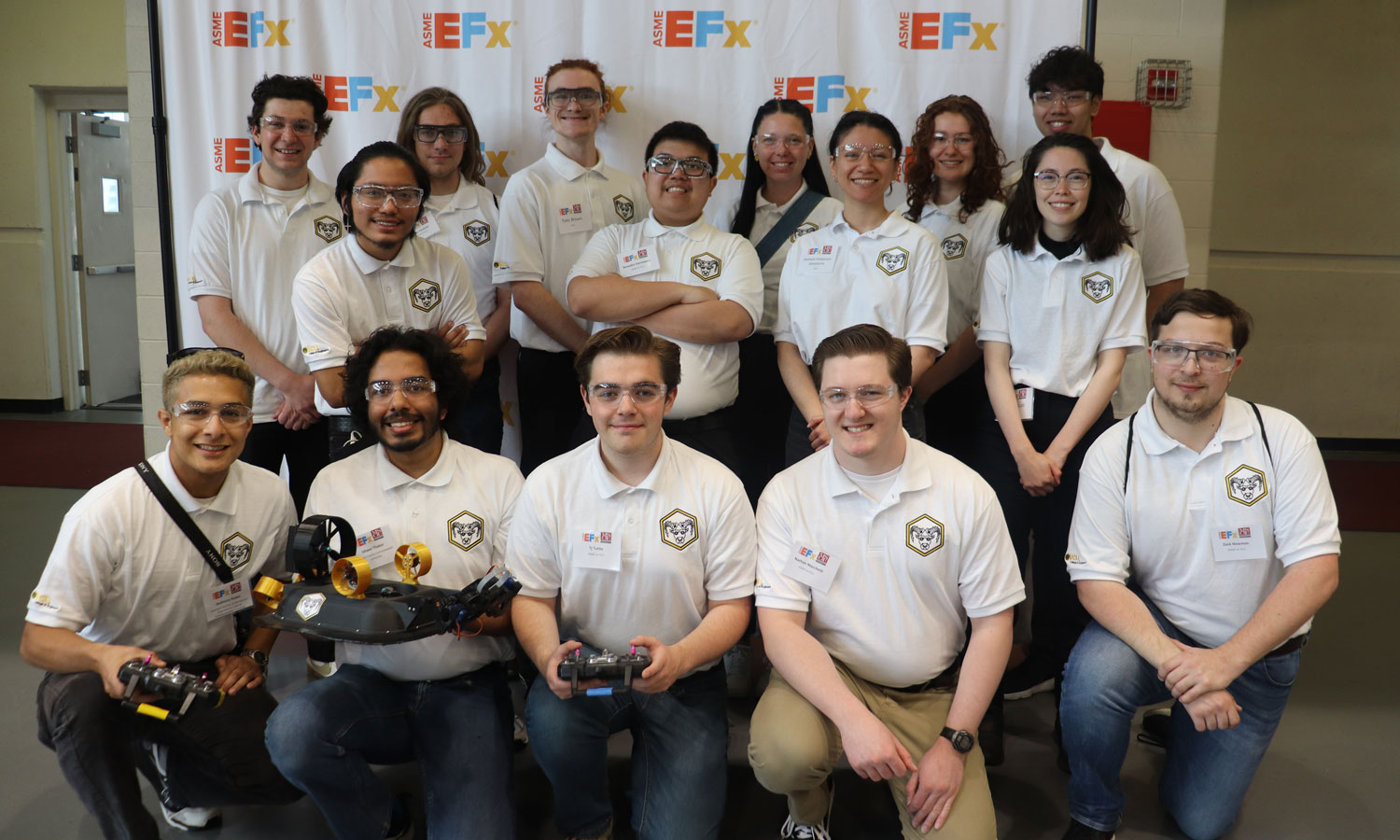Students from the VCU Engineering chapter of the American Society of Mechanical Engineers (ASME) recently won first place in ASME’s Innovative Additive Manufacturing 3D (IAM3D) challenge.
Held at the Milwaukee School Of Engineering, 15 teams participated in the competition, which challenged students to use additive manufacturing (commonly known as 3D printing) to build a hovercraft capable of navigating a course, securing a package and delivering it.
“Our first hovercraft was a rudimentary one made of a fan, cardboard and trash bags,” said Ishaan Thakur, vice-president of the VCU ASME chapter and project manager for the IAM3D challenge. “We wanted to give our team the ability to test concepts and experiment with different parameters that can impact a hovercraft's ability to fly. Should we put a skirt on the bottom? Will having small perforations increase stability? What's the best way to let air flow out from underneath? Since the materials were cheap, we were able to make several of these prototypes and learn valuable lessons that informed our final design.”
VCU Engineering’s hovercraft, affectionately named Egg Rice because of the student’s love for a food dish known as gyeran bap, was built from this iterative design process. Students arranged into four teams which reported to Thakur. They collaboratively developed the vehicle’s chassis, power systems, hover devices, and payload delivery mechanism. Mechanical, electrical and computer engineering students comprised the majority of the team who worked together on this project.
“Some of the more interesting features we explored included flexible 3D printing, flow simulation, and sensor integration,” Thakur said. “I think we've found that it's not hard to make something hover, but it is pretty hard to explain quantitatively why it is, and that's a question we needed to explore and ultimately answered with our winning design.”
Previous IAM3D competitions had VCU Engineering’s ASME chapter tackling similar problems. They have built a first-person point-of-view drone capable of navigating an obstacle course to pick up a payload and a stunt car that can traverse a zipline while towing cargo and jumping off ramps. Consistent in all these events is the use of additive manufacturing to create the solutions for each challenge.
Congratulations to all of our VCU Engineering IAM3D challenge team members. Your hard work and innovative design approach propelled you to UNrivaled success!
